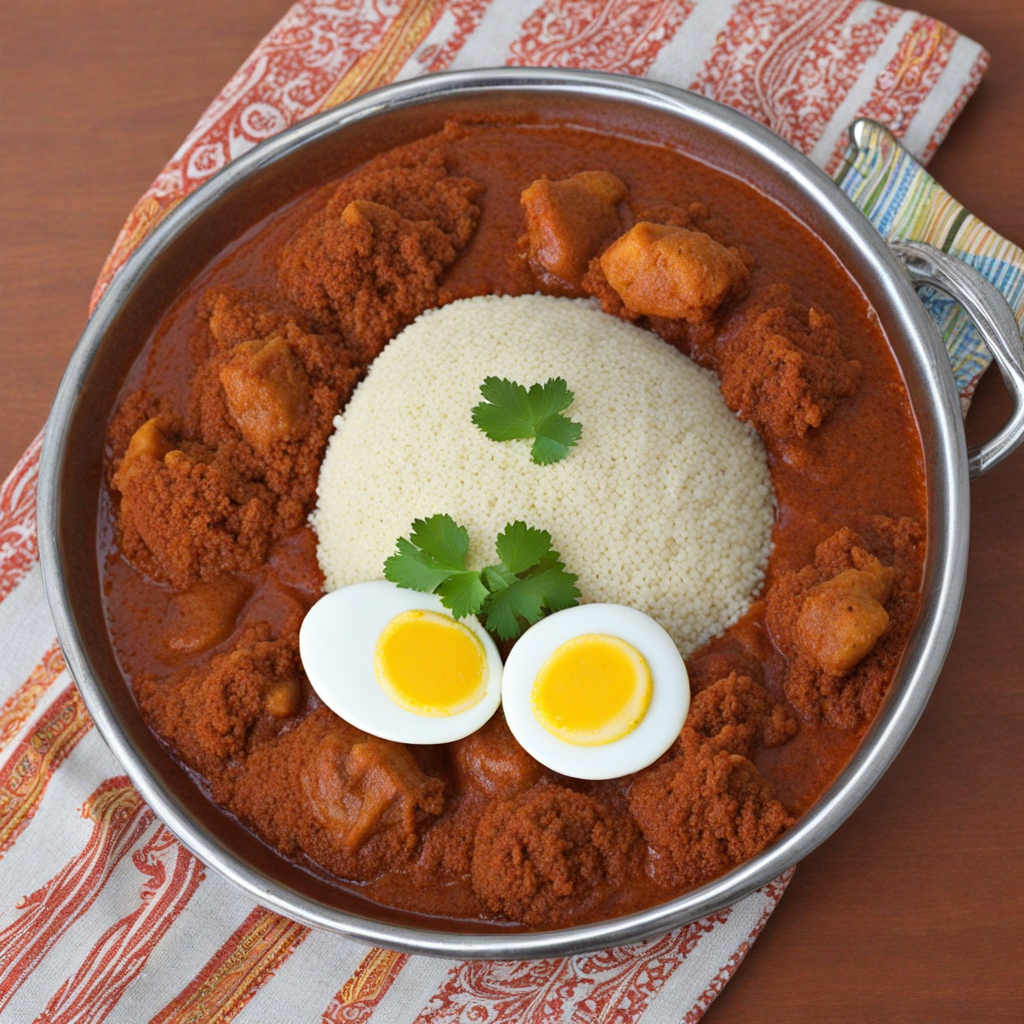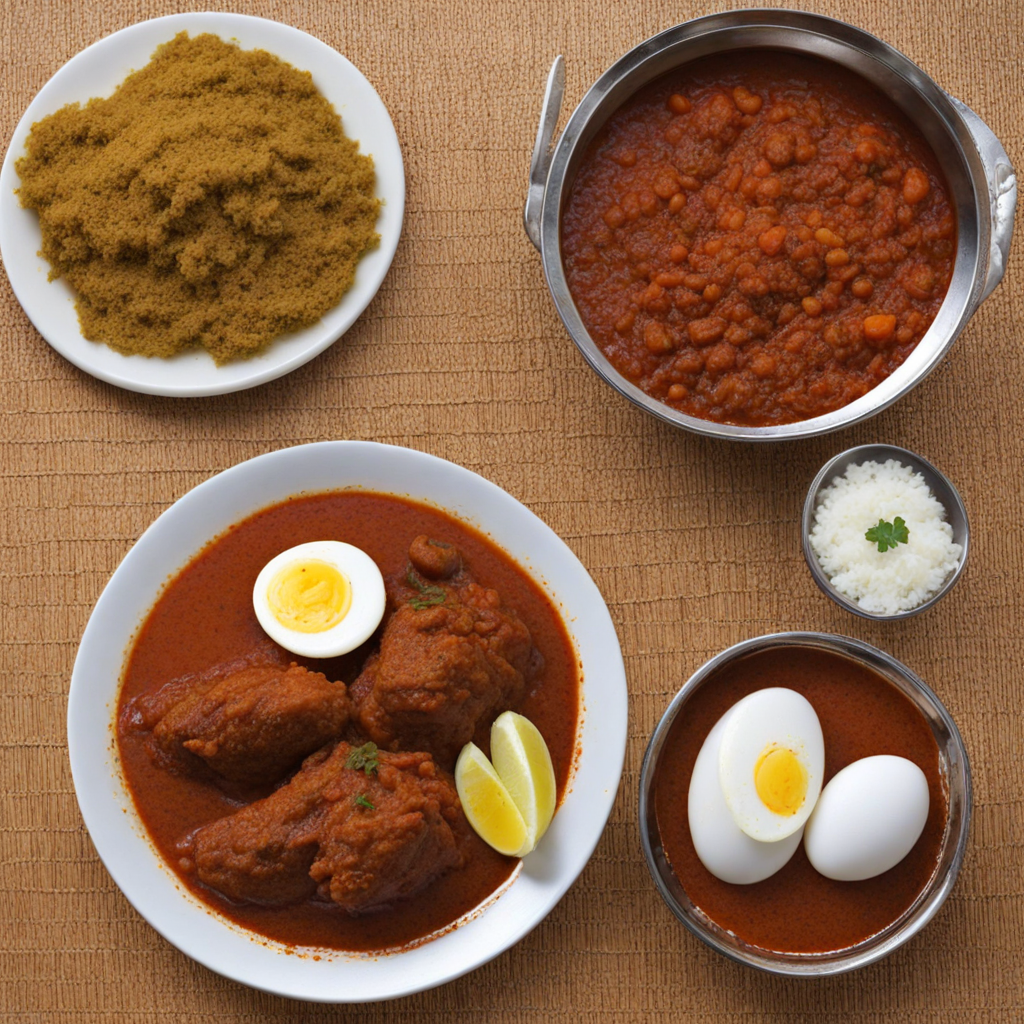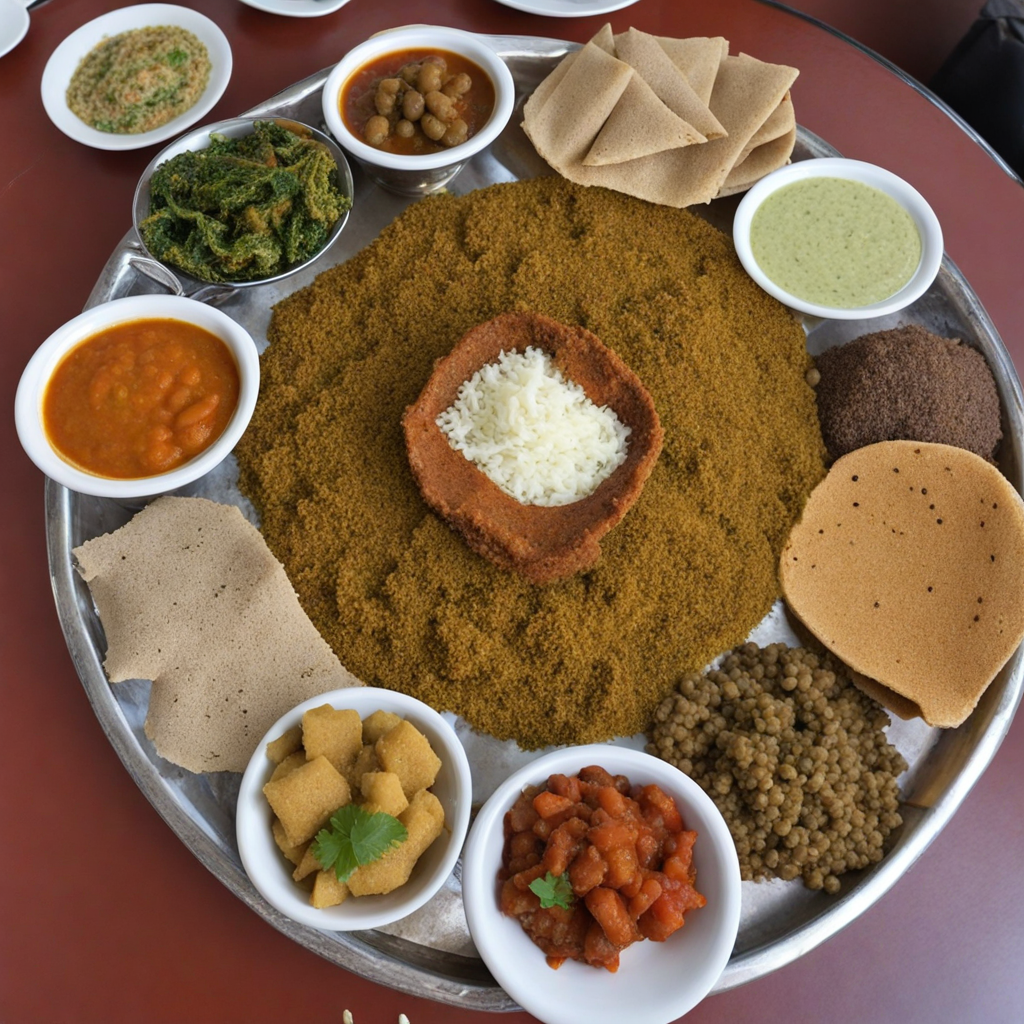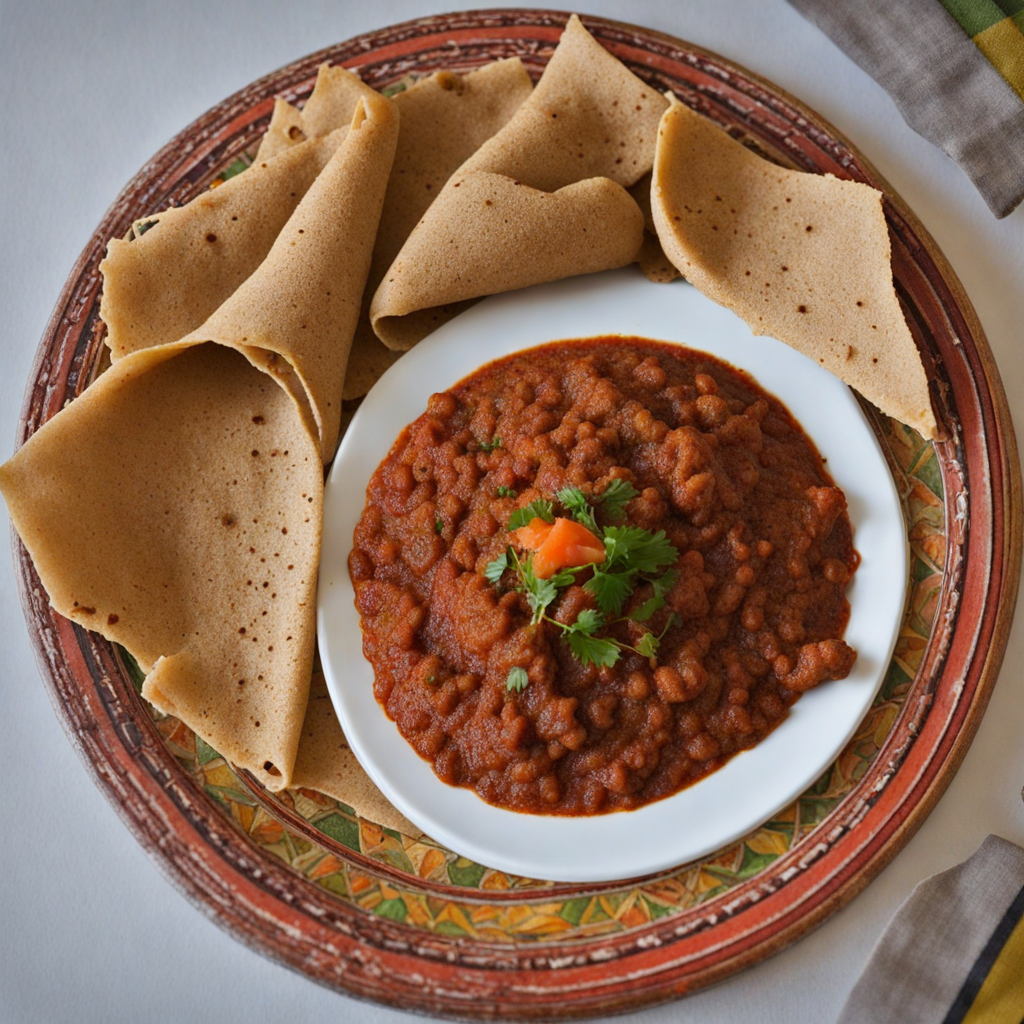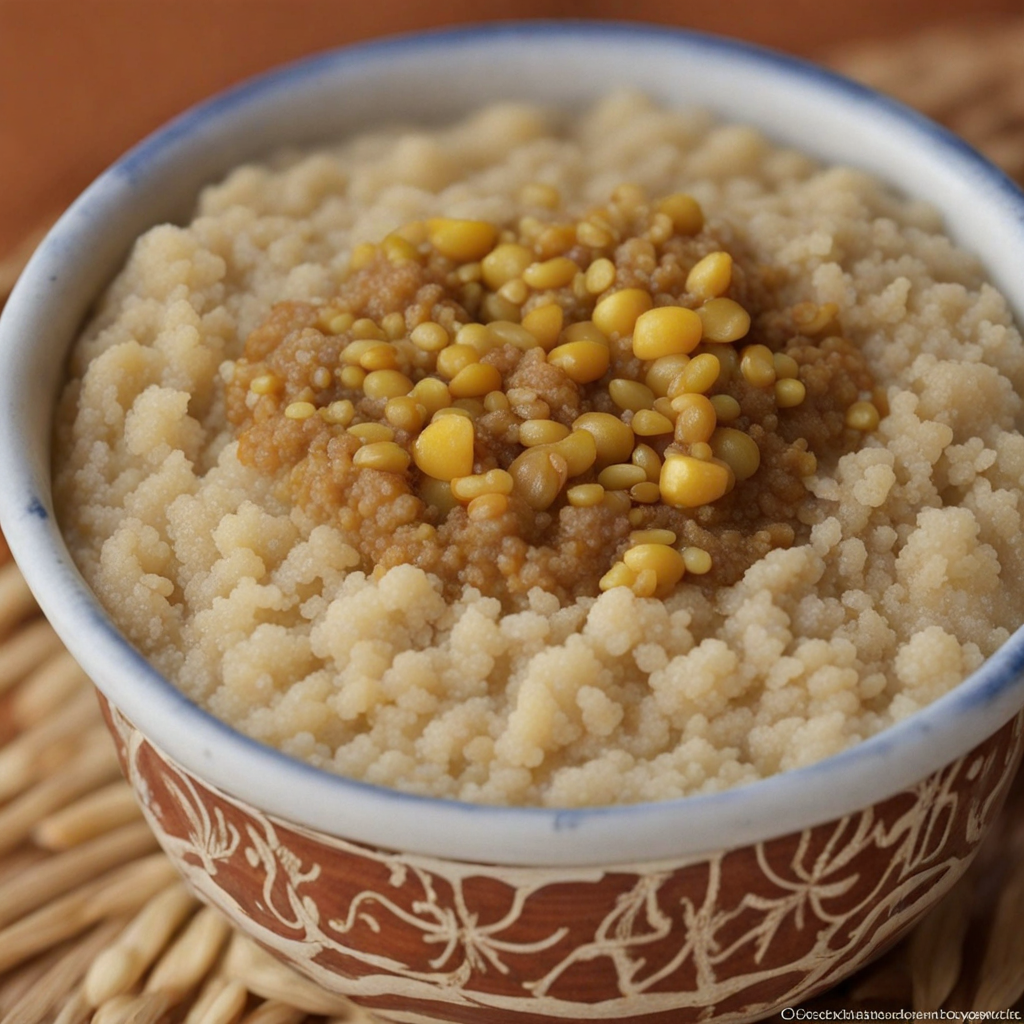Tsebhi Dorho
Tsebhi Dorho is a traditional Eritrean dish that captivates the senses with its rich flavors and vibrant colors. At its core, Tsebhi Dorho is a spicy chicken stew, where tender pieces of chicken are simmered in a fragrant base of berbere spice—a blend of chili peppers, garlic, ginger, and other aromatic spices. This unique spice mix gives the dish its characteristic heat and depth, setting the stage for a culinary experience that is both warming and invigorating. The chicken absorbs the complex flavors as it cooks, becoming succulent and infused with the earthy notes of the spices.
How It Became This Dish
The History of ጸብሒ ዶሮ (Tsebhi Doro): A Culinary Treasure of Eritrea #### Origins of Tsebhi Doro Tsebhi Doro, or Eritrean chicken stew, is a dish that encapsulates the rich culinary traditions of Eritrea, a nation located in the Horn of Africa. This hearty stew is primarily made with chicken, spices, and a base of berbere, a spice blend that is central to Eritrean cuisine. The origins of Tsebhi Doro can be traced back to the ancient practices of cooking and the agricultural lifestyle of the Eritrean people, who have relied on poultry and spices for sustenance for centuries. Poultry farming has been a significant part of Eritrean agriculture, with chickens often being raised in households for both meat and eggs. The use of chicken in stews is deeply rooted in the local culture, where communal meals often feature a shared dish like Tsebhi Doro, symbolizing togetherness and hospitality. The use of berbere, a fiery mix of chili peppers, garlic, ginger, and other spices, highlights the region's rich agricultural diversity, including the cultivation of various spices and herbs. #### Cultural Significance Tsebhi Doro holds a special place in Eritrean culture, often being served during significant celebrations and gatherings, such as weddings, religious holidays, and communal feasts. The dish represents more than just sustenance; it embodies the spirit of community and the importance of sharing meals with family and friends. Traditionally, Tsebhi Doro is served with injera, a sourdough flatbread made from teff flour. This combination is not only a staple in Eritrean cuisine but also reflects the country's agricultural practices and the reliance on locally sourced ingredients. Injera serves as both a plate and a utensil, allowing diners to scoop up the stew, emphasizing the communal aspect of dining. In Eritrean households, the preparation of Tsebhi Doro is often a family affair, with recipes passed down through generations. Each family may have its unique twist on the dish, incorporating local ingredients or personal preferences, which adds to the tapestry of flavors and traditions associated with it. #### Development Over Time The development of Tsebhi Doro can be linked to the broader historical and cultural evolution of Eritrea itself. The region has been influenced by various cultures and civilizations over millennia, including the ancient Kingdom of Aksum, the Ottoman Empire, and Italian colonization in the late 19th and early 20th centuries. Each of these influences has contributed to the rich culinary landscape of Eritrea, shaping dishes like Tsebhi Doro. During the Aksumite Empire (circa 100 AD to 940 AD), trade routes established a connection between Eritrea and the Mediterranean world. Spices, grains, and other ingredients were exchanged, leading to a diversification of flavors and cooking techniques. The introduction of berbere is believed to have occurred during this period, as spices from the Arabian Peninsula and India began to influence local cuisine. The Italian colonial period (1890-1941) brought about significant changes in Eritrean food culture. Italians introduced new cooking methods and ingredients, such as tomato sauce, which eventually found its way into traditional dishes. While Tsebhi Doro primarily relies on traditional spices and recipes, the influence of Italian cuisine can be seen in the use of tomatoes and the integration of pasta in some variations of the dish. However, it was the Eritrean War of Independence (1961-1991) that significantly impacted food culture, including the preparation and perception of Tsebhi Doro. The war led to food shortages and economic challenges, which forced many families to adapt their recipes and cooking methods. During this period, communal cooking became a necessity, leading to a revival of traditional practices and the importance of sharing meals among the fighters and the community. In the post-independence era, following Eritrea’s liberation in 1993, there has been a renewed pride in traditional culinary practices. Tsebhi Doro has become emblematic of Eritrean identity and culture, celebrated in both local and diaspora communities. Eritreans living abroad often gather to share this dish, creating a sense of belonging and cultural continuity despite geographical distances. #### Contemporary Significance Today, Tsebhi Doro continues to be a beloved dish in Eritrean households and restaurants, both within the country and among the diaspora. Its preparation is often seen as an art form, with each cook striving to achieve the perfect balance of spices and flavors. The dish has gained recognition in international food circles, where it is appreciated for its depth of flavor and the story it tells about Eritrean culture. Modern adaptations of Tsebhi Doro reflect the evolving nature of cuisine, with chefs experimenting with new ingredients and techniques while still honoring traditional practices. Vegetarian and vegan variations of the dish have also emerged, catering to a wider audience while still maintaining the essence of the original. In Eritrea, Tsebhi Doro remains a staple in restaurants and homes, often served during holidays like Christmas and Easter. Its cultural significance has been reinforced through various food festivals and culinary events that celebrate Eritrean heritage. As Eritrea continues to navigate its place in the global culinary landscape, Tsebhi Doro stands as a testament to the resilience and adaptability of its people. #### Conclusion Tsebhi Doro is more than just a dish; it is a culinary narrative that weaves together the history, culture, and identity of Eritrea. From its ancient origins rooted in agriculture to its contemporary significance as a symbol of community and tradition, Tsebhi Doro reflects the richness of Eritrean heritage. As it evolves and adapts to modern tastes while retaining its traditional heart, this beloved chicken stew continues to play a vital role in the lives of Eritreans, both at home and around the world.
You may like
Discover local flavors from Eritrea


